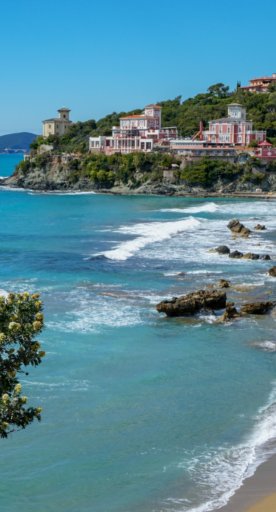The shore, shaded by dense pinewood, alternates between a typical beach resort and great stretches of enchanting white sand.
The Vada Shallows are another area of sea that attracts fishing enthusiasts all year round. The Rada del Saraceno, the Pietra Bianca Pinewood, the Molino a Fuoco and the Mazzanta are known for being among the town's oldest corners.
Vada was in fact the historic natural harbour of Volterra and was documented as early as 330 B.C.E, and later by Cicero. It went on to become a refuge for Saracen pirates, whose presence is confirmed by terracotta pots and vases found on the seabed.
Important finds in the town of San Gaetano have revealed a substantial dock built in the second half of the 1st century A.D., as well as the ruins of some baths and a market.
Not far from Piazza Garibaldi - the heart of the town ever since the Habsburg-Lorraine era - is the impressive Renaissance watchtower, a fine example of 16th-century defensive architecture.
Vada is an ideal destination for lovers of watersports, such as windsurfing, being an important nautical centre and a little port for mooring boats.






















